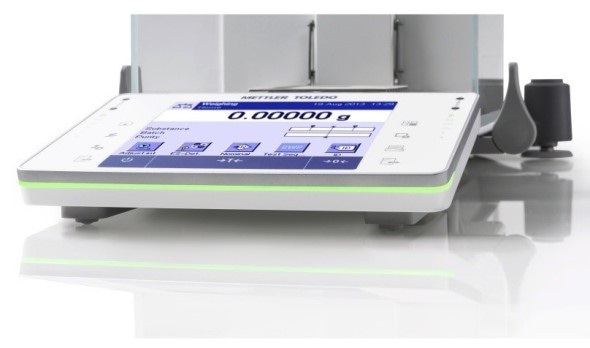Lean management principles such as Jidoka and Andon can significantly contribute to Lean Laboratory performance. The new “First-Defect-Stop Guide” from METTLER TOLEDO advocates rapid identification and elimination of measurement errors, in order to avoid downstream issues.
Lean Management techniques applied to the laboratory have been shown to improve quality and efficiency. The principle of First-Defect-Stop for laboratory weighing is designed to help laboratory personnel strengthen lab processes and identify incorrect results before they have the chance to have negative consequences on downstream processes.

If a problem is detected, the "First-Defect-Stop" procedure should be triggered. The aim of First-Defect-Stop is to enable a laboratory technician to stop the process, identify a problem and resolve it within a few minutes, by following a checklist, for example. However, if the problem cannot be resolved quickly or easily, the procedure should involve escalation of the issue, such as to notify the supervisor or third party service provider. The ultimate goal, of course, is not just to solve the problem once, but to address the cause and eliminate it, in order to prevent recurrence of the error. Repeatedly ignoring the root cause of the problem is foolhardy, because it simply leads to inefficiency and further errors downstream, causing inaccurate results, poor reproducibility and extended lead times.
The METTLER TOLEDO “First-Defect-Stop Guide” shows how critical lean management concepts are applied to the lab. The guide is based on the Japanese Lean Manufacturing principles:
- Jidoka—which means empowering machines or operators to stop production automatically on discovery of a defect in a process.
- Andon—which is a visual signal or system, such as a light or sound alarm, designed to alert staff of a quality or process problem, so that remedial action can be taken. This principle is integral to First-Defect-Stop.
Applying the Jidoka principle to a Lean Laboratory approach involves the following steps:
- Stop a process as soon as a problem is detected (to avoid propogating errors through the workflow)
- Fix the problem quickly (to avoid delays)
- Investigate the root cause of the problem
- Take steps to avoid any reoccurence of the same problem
This First-Defect-Stop guide, titled "Minimize Errors in Weighing", is a trouble-shooting tool designed to support laboratory personnel to identify specific problems with a laboratory balance, such as long settling times or unstable readings. Step-by-step guidance is provided to support the user to identify and assess the problem. Analysis of the root cause(s) is described, which may be due to the environment, the sample, the method, the user, or the equipment, for example. Advice on reducing the impact and steps to take to prevent the same problem from happening again are given, as well as examples of Andon warnings that could be installed in each case.
The Andon problem visualization method can be implemented in the laboratory, just as easily as in a production environment. METTLER TOLEDO has long experience in incorporating these practices in its product design. An example of such an Andon method is StatusLight™. This warning function of XPE and XPR balances warns the user if a balance is not ready to weigh, in order to avoid calibration or technical errors causing an error in the measurement result. Appropriate remedial action is advised on the balance touchscreen for immediate implementation by the user.